The ever-inquisitive Barry did a little research on the shoaling behind Metompkin Island on Virginia's Eastern Shore and found some very interesting information. Using google earth he was able to track the channel and island over the past several years. Starting in September of 2005 you see the well-defined channel with marsh on either side and the sand beach of the island.
By December of that same year the sat photo shows the sand beach moving east on top of what was, just a few months earlier, a marsh.
Eleven months later, by November 2006, the channel and island are much the same - marsh to the west, a well-defined channel and only the sand separating the channel from the ocean.
By July of 2007, 2007 the island is clearly being pushed to the west into the channel, with what appears to be the beginning of a new inlet or at least channels across the island where water could flow at high tides.
That year, 2007, caught my attention as I remembered spending four days down in the Outer Banks watching an unusually strong and - more importantly - slow moving nor'easter batter the beaches. The fact that it was a slow moving storm - it hung off the coast from April 14 to April 17 - meant the beaches were battered by eight unusually high tides with accompanying high winds and surf, each high tide leaving the shore more vulnerable to the next. It was a significant event for the Outer Banks and it confirms what many locals will tell you: no-name storm, the nor'easters, hang around longer than the named storms, hurricanes, and can do more damage than fast moving tropical storms that come and go in less than a day.
Coastal changes are processes that happen over years or decades, and these changes to Metompkin Island are clearly part of an ongoing process. But I do have to wonder if the Spring 2007 nor'easter is what finally pushed the island into the channel.
And here's Barry's last sat image with the channel disappearing as the island slides to the west. This is pretty much what we found (the hard way) in May of this year.
Thanks for the research, Barry, and an interesting lesson in coastal erosion.
steve













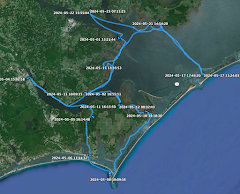
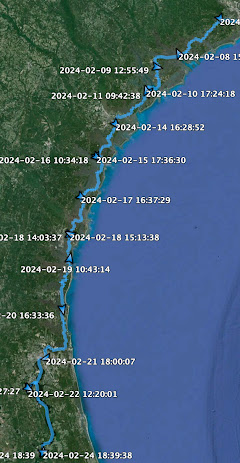

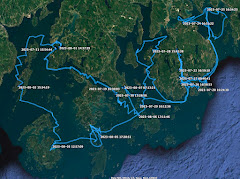

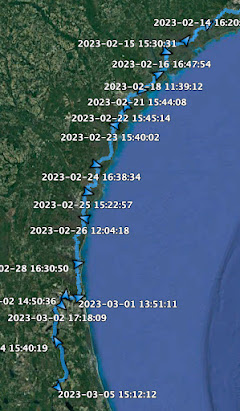

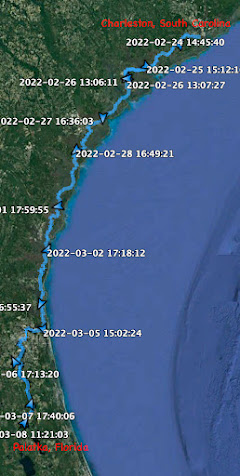
























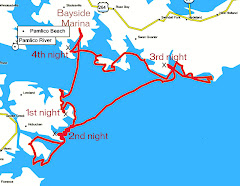


8 comments:
Fascinating use of older satellite imagery to tell a compelling story. Many thanks to Barry for the "leg work," and you for posting.
There is a word for this. It is called "inexorable."
Not to be confused with inexecrable. Although some might also describe it thus.
You lawyers always like to use those big words. I had to look one up, but not the other.
steve
Steve -- I have to say, between this shoaling, the spidery network of threadlike creeks, and the looming disestablishment of that portion of the inland waterway ... completing that section of the circuit has become even more adventurous!
If it weren't for mosquitoes I might be tempted to eel around those shallow creeks, but I think my only option when I try this will be an offshore passage during the right weather window.
Incredible how the shore seems to roll inland.
Seth,
do you have sails in hand?
steve
Sails yes; boat no. Going back to work has really cut into my boatbuilding time....
Mayhap you need to fit Spartina with removable wheels...
Post a Comment